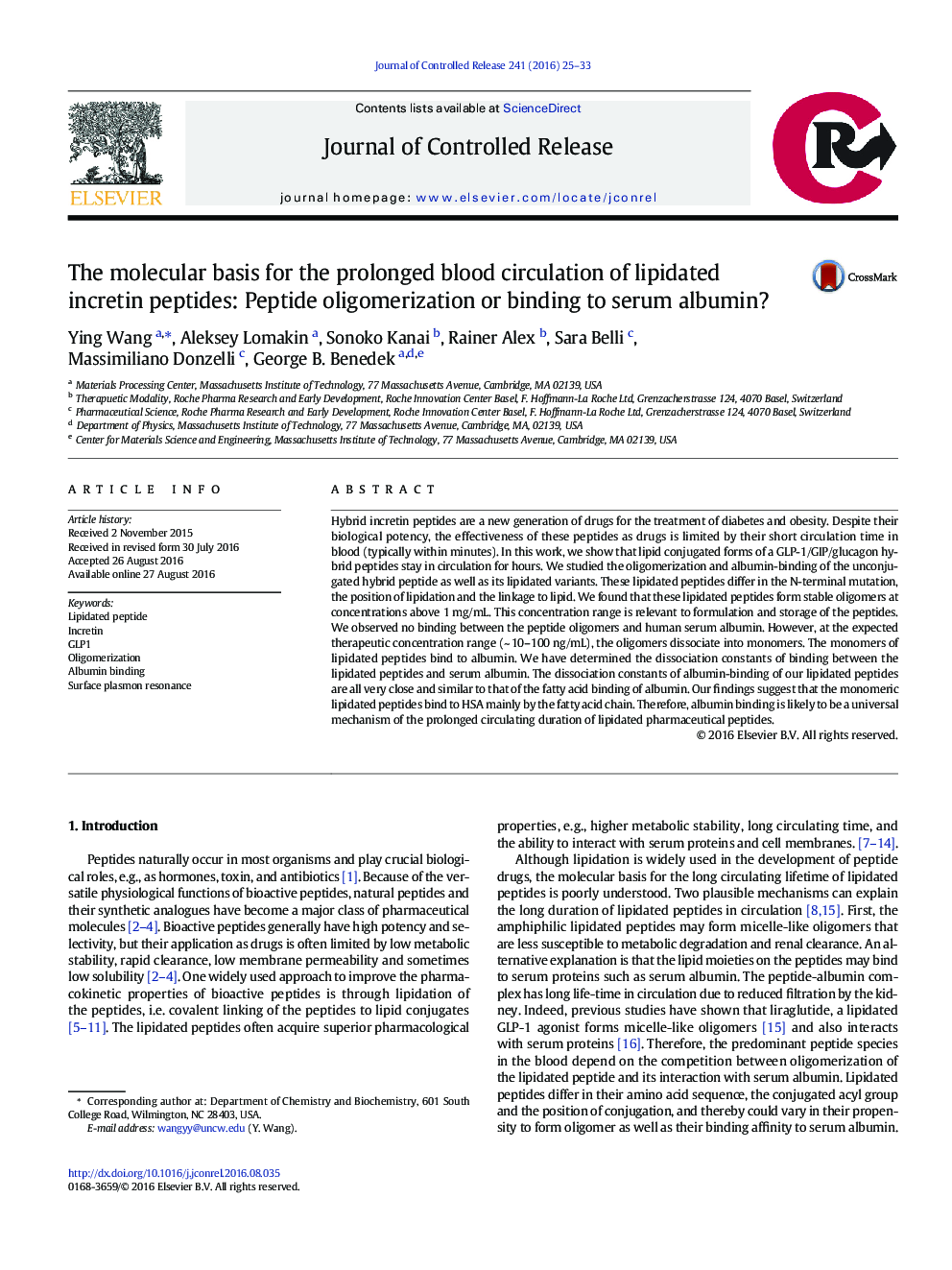| کد مقاله | کد نشریه | سال انتشار | مقاله انگلیسی | نسخه تمام متن |
|---|---|---|---|---|
| 5433897 | 1509008 | 2016 | 9 صفحه PDF | دانلود رایگان |
Hybrid incretin peptides are a new generation of drugs for the treatment of diabetes and obesity. Despite their biological potency, the effectiveness of these peptides as drugs is limited by their short circulation time in blood (typically within minutes). In this work, we show that lipid conjugated forms of a GLP-1/GIP/glucagon hybrid peptides stay in circulation for hours. We studied the oligomerization and albumin-binding of the unconjugated hybrid peptide as well as its lipidated variants. These lipidated peptides differ in the N-terminal mutation, the position of lipidation and the linkage to lipid. We found that these lipidated peptides form stable oligomers at concentrations above 1Â mg/mL. This concentration range is relevant to formulation and storage of the peptides. We observed no binding between the peptide oligomers and human serum albumin. However, at the expected therapeutic concentration range (~Â 10-100Â ng/mL), the oligomers dissociate into monomers. The monomers of lipidated peptides bind to albumin. We have determined the dissociation constants of binding between the lipidated peptides and serum albumin. The dissociation constants of albumin-binding of our lipidated peptides are all very close and similar to that of the fatty acid binding of albumin. Our findings suggest that the monomeric lipidated peptides bind to HSA mainly by the fatty acid chain. Therefore, albumin binding is likely to be a universal mechanism of the prolonged circulating duration of lipidated pharmaceutical peptides.
127
Journal: Journal of Controlled Release - Volume 241, 10 November 2016, Pages 25-33
